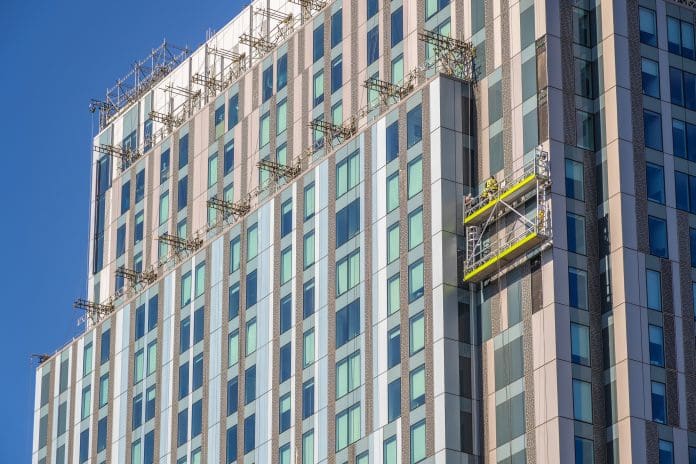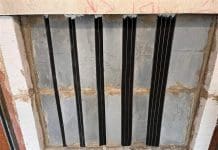Association for Specialist Fire Protection technical officer Stuart Southall provides an overview of the Building Safety Act, which introduces significant changes and improvements in building safety and regulation in England and Wales, including fire safety
The Building Safety Act received Royal Assent on 28 April 2022. It was published on 16 May 2022 and is being implemented from spring 2022 to mid-2024, through a programme of secondary legislation.
This long-awaited legislation is the government’s response to Dame Judith Hackitt’s Independent Review of Building Regulations & Fire Safety established in response to the Grenfell tragedy. It applies to buildings in England and Wales that are 18m or more in height, or contain multiple dwellings, and introduces responsibilities for building owners, managers and developers.
The act aims to address the shortcomings in fire safety legislation identified in Hackitt’s report, Building a Safer Future. It serves as enabling legislation to implement all 53 recommendations from the report.
Many key requirements for the design and construction of higher-risk building (HRBs) came into force on 1 October 2023 through the following secondary legislation:
- The Building (Higher-Risk Buildings Procedures) (England) Regulations 2023, SI 2023/909.
- The Building Regulations etc. (Amendment) (England) Regulations 2023, SI 2023/911.
- The Building (Approved Inspectors etc. and Review of Decisions) (England) Regulations 2023, SI 2023/906.
The HRB regime consists of new building control procedures and Building Regulations that must be complied with, together with related changes to how building control inspectors operate. It introduces a prescriptive building control approval “gateway” process before works can start and before completed buildings can be occupied. Approval must also be sought before implementing significant changes to the works.
A new National Building Safety Regulator will help enforce new fire safety regulations
The new building control regime will be overseen by the Building Safety Regulator (BSR) as part of the Health & Safety Executive.
The appointment of the new National Building Safety Regulator signifies a stricter regulatory regime in the UK. The regulator’s primary responsibilities include overseeing the safety and performance of all buildings and promoting competence among those working in the construction and building industry.
The Gateway process
The Building Safety Act introduces three Hackitt Gateways. Gateway 1 became active in September 2022 and focuses on requiring more detailed fire strategies.
Gateway 2 came into force on 1 October 2023. This requires clients and designers for high-risk buildings to submit full plans to the HSE in order to obtain permission to construct. This represents a large quantity of technical documentation and places a number of requirements on principal contractors. It is particularly challenging for design and build contracts.
Gateway 3 is the final check to ensure that what was built matches the original plans. For a completion certificate to be approved, there must be sufficient evidence to support that what was built reflects the approved plans, and the requirements of the Building Regulations have been met. These checks will rely on the submission of suitable Golden Thread information.
Integrating the Golden Thread
The Golden Thread is intended to provide more detailed building and fire safety information than required under Regulation 38 of the Building Regulations. It aims to create a comprehensive, digitally stored and secure source of truth about a building. It must be available to those who need the information, presented in a usable format and be usable by a person to conduct a job.
Introduced by the Higher Risk Building Keeping & Provision of Information etc. Regulations, these requirements came into force on 1 October and address the need to keep building information digitally and securely. This is vital for ensuring the safety of HRBs. Clients are primarily responsible for collating and submitting this information to the HSE.
It is important to remember that the Golden Thread isn’t just for new construction. Existing relevant buildings also need to maintain a comprehensive record of their building and fire safety information. This is essential for risk management. If information is missing, the building owner is responsible for demonstrating efforts to find it and adapt safety measures accordingly.
The act encourages the digital recording of building systems, installation practices, product certifications, proof of competence, and more. This will drive increased transparency and accountability in the construction and building management industry.
To handle diverse digital systems and ensure the accuracy of digital records, well-defined inspection protocols should be included in contracts and codes of practice. This is crucial for maintaining the integrity of the Golden Thread. ASFP Task Group 9 Digital has just started work on a Code of Practice for digital software for recording Golden Thread information.
Building fire safety and regulations will be better supported by the new legislation
In summary, the Building Safety Act, Hackitt Gateways and the Golden Thread represent a comprehensive overhaul of building safety regulations in the UK, with the aim of increasing transparency, accountability and safety in construction and building management.
Stuart Southall
Technical officer
Association for Specialist Fire Protection
Tel: +44 (0)24 76 935412














